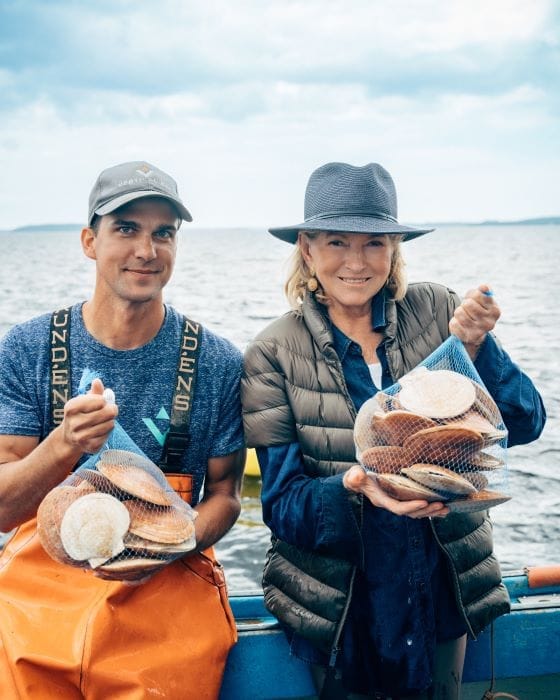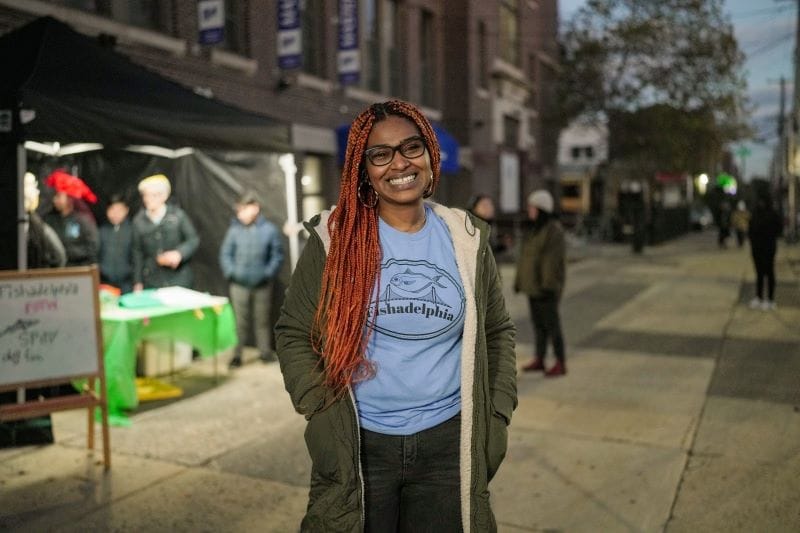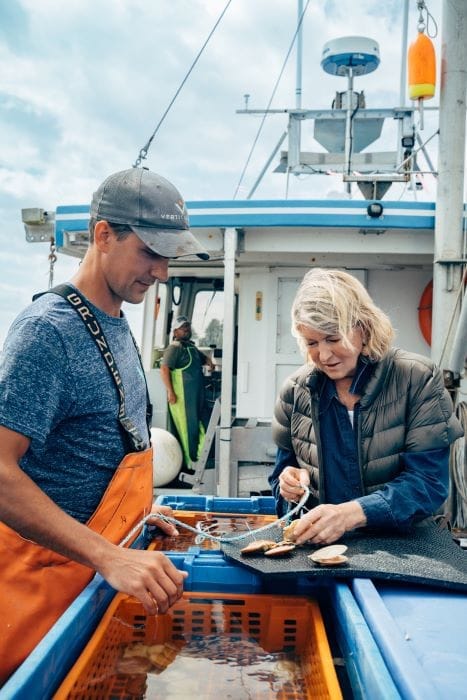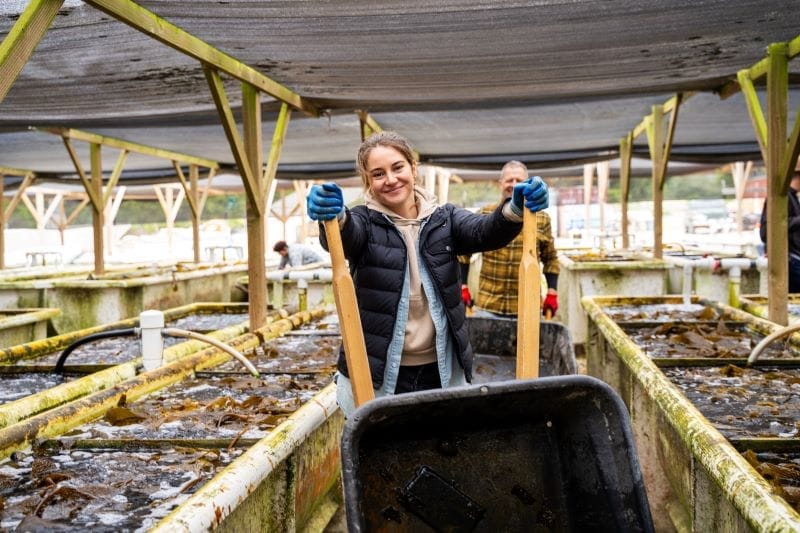Sustainable Seafood: PBS docuseries “Hope in the Water” highlights the possibilities in our world’s waters
We live in a community and state surrounded by water, but have you ever thought about where the seafood you purchase was sustainably raised or fished?
It’s a question the creators of the three-part docuseries “Hope in the Water” hope you’ll start asking. They hope to inspire a future generation of sustainable seafood farmers and fishers.
The docuseries takes you on a journey around the world with some well-known names like actress Shailene Woodley, Martha Stewart, José André and Baratunde Thurston as they share stories of fishers, water farmers and environmental activists who show it is possible to harvest from our world’s waters while saving our oceans.
The series is brought to you by the non-profit Fed by Blue, along with Hollywood heavyweights including the 13-time Emmy Award-winning producer and writer David E. Kelley and the four-time James Beard Award and Emmy Award winner Andrew Zimmern.
We recently attended a screening of excerpts from the docuseries at Clearwater Marine Aquarium. We spoke with Jennifer Bushman, executive director of Fed by Blue and the executive director of impact for “Hope in the Water” about how we can become better seafood consumers.

Why was the ‘Hope in the Water’ docuseries created?
Jennifer Bushman: By the time we have 10 billion on the planet in 2050, our food systems are going to be stretched to capacity. The United Nations has said that food from water will be one of the most important sources of food. So, for us, working with PBS was important because of the reach we would have to kids.
If we want to rely on a system of foods from water – about 3.2 billion people on the planet rely on some part of their nutrients every day from water – we’ve got to raise a generation of eaters who love fish and seafood and kids who want to work on the water.
There are many platforms this docuseries could have been featured. Why PBS?
Jennifer Bushman: I think it's super important to know that we specifically chose PBS. Our collaborator is David E. Kelly, a renowned writer and producer in Hollywood of series like “L.A. Law,” “Ally McBeal” and “Big Little Lies.” Pretty much all of the streaming networks and entities wanted his first-ever unscripted series.
We chose PBS because it was accessible. It wasn't behind a paywall. You can download the PBS Passport right now and get “Hope in the Water” for free. You can watch it on PBS’ YouTube channel.
And you know what's so exciting? This is part of an entire ecosystem of science-based, entertaining, important content that's good for the entire family.

Throughout the series, we learn about efforts around the world to sustainably fish and aquafarm. Here at home, how can we be better consumers of seafood?
Jennifer Bushman: We want you to buy responsible seafood. That's kind of our role as Fed by Blue is to raise awareness about the importance of responsibly sourced foods from water. So go to fedbyblue.org, click on Seafood Scout, and what you'll see are questions you can ask.
So if you're sitting at a restaurant or you're looking at the seafood case in a grocery store, you want to ask questions like: Where did this come from? What's the name of the farm? What's the species? And as you engage and ask, you'll learn things.
Aquaculture is also a really important part of this, and just like you can raise a chicken well, you can raise the chicken badly. The same now is true for fish. So it's not a question of farmed versus wild. It's really this healthy balance. The key here is you asking questions.
How can we look for sustainable seafood in stores?
Jennifer Bushman: Places like Target and Walmart have highly sustainable foods from water. (At Walmart) you can look and see: This is certified by the Aquaculture Stewardship Council. This is the Marine Stewardship Council. Target follows an amazing, responsible seafood sourcing guide called Seafood Watch, so pretty much anything you get there is going to be good to go.
There are a lot of people out there doing the right things. A lot of the seafood that is sourced, especially US-based seafood, is responsibly sourced.
Why is it so important to make sure we are purchasing and consuming sustainable seafood?
Jennifer Bushman: The reality is we share these waters; we share them with our marine mammals and with other fish and bird populations. And the reality is we share dinner with them, too.
So when we're responsibly fishing, when we're responsibly raising oysters or fish, we are sharing those waters with those incredible animals to build a healthy ecosystem that's going to really be future-proof as we look at all of the changes that are happening.

Let’s talk more about the outreach to youth.
Jennifer Bushman: At Fed by Blue, one of the major parts of our program is K through 12 education. And so when we heard that PBS was going to build toolkits for teachers out of the content and use us as a resource, we were really excited.
As of today, those learning media toolkits for PBS grades six through 12 in STEAM and Career Education are available to 90% of schools in the United States, and over 440,000 teachers have already downloaded the toolkits to teach in schools.
**Visit pbslearningmedia.org and search ‘Hope in the Water’ for the toolkit.
In addition to purchasing sustainable seafood, Kelly McAdams, vice president of Conservation Education at Clearwater Marine Aquarium, shared more things we can do at home to make a difference.
Kelly McAdams: There’s plastic in almost anything today. [Choose to] use something that is more sustainable and is not a single-use product whenever you possibly can. And if you do use something that is single-use, make sure that you recycle it properly and dispose of it properly.
When it gets into the water, many things can happen depending on what the product is.
It may remain in the water and never endanger an animal by, you know, choking it or them swallowing it or anything like that. But as it breaks down, it breaks into tiny, tiny particles that you may or may not even be able to see, and those animals then ingest that.
So maybe it's something that a tiny little fish ingests, and then it becomes part of the food chain. So it just keeps going up into larger and larger animals.
Originally published in the January 2025 issue of Tampa Bay Parenting Magazine.


